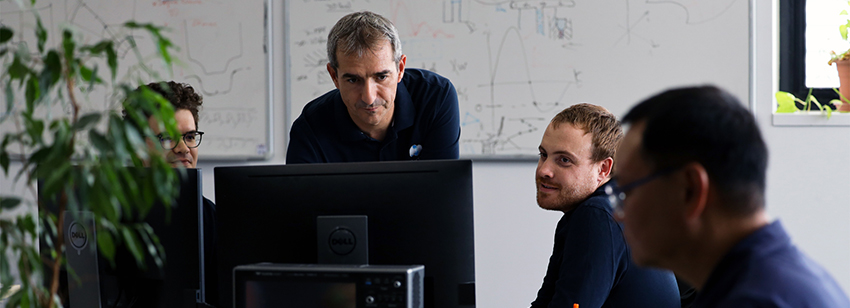
Our simulation tools combined with HPP technology
Our expert teams have years of experience and expertise in simulation on conventional processes combined with our HPP technology. We simulate high speed deformation processes using magnetohydrodynamic (MHD) codes for all Bmax processes. We have a 2D/3D Multiphysics approach in order to handle testing and prototyping such as recalibration, investigations and defining solutions tailored to your internal needs.
We have developed a unique method to characterize metals at high deformation speed based on high velocity measurement by laser interferometry (up to 1,000 m/s), a prerequisite to get realistic simulation results.
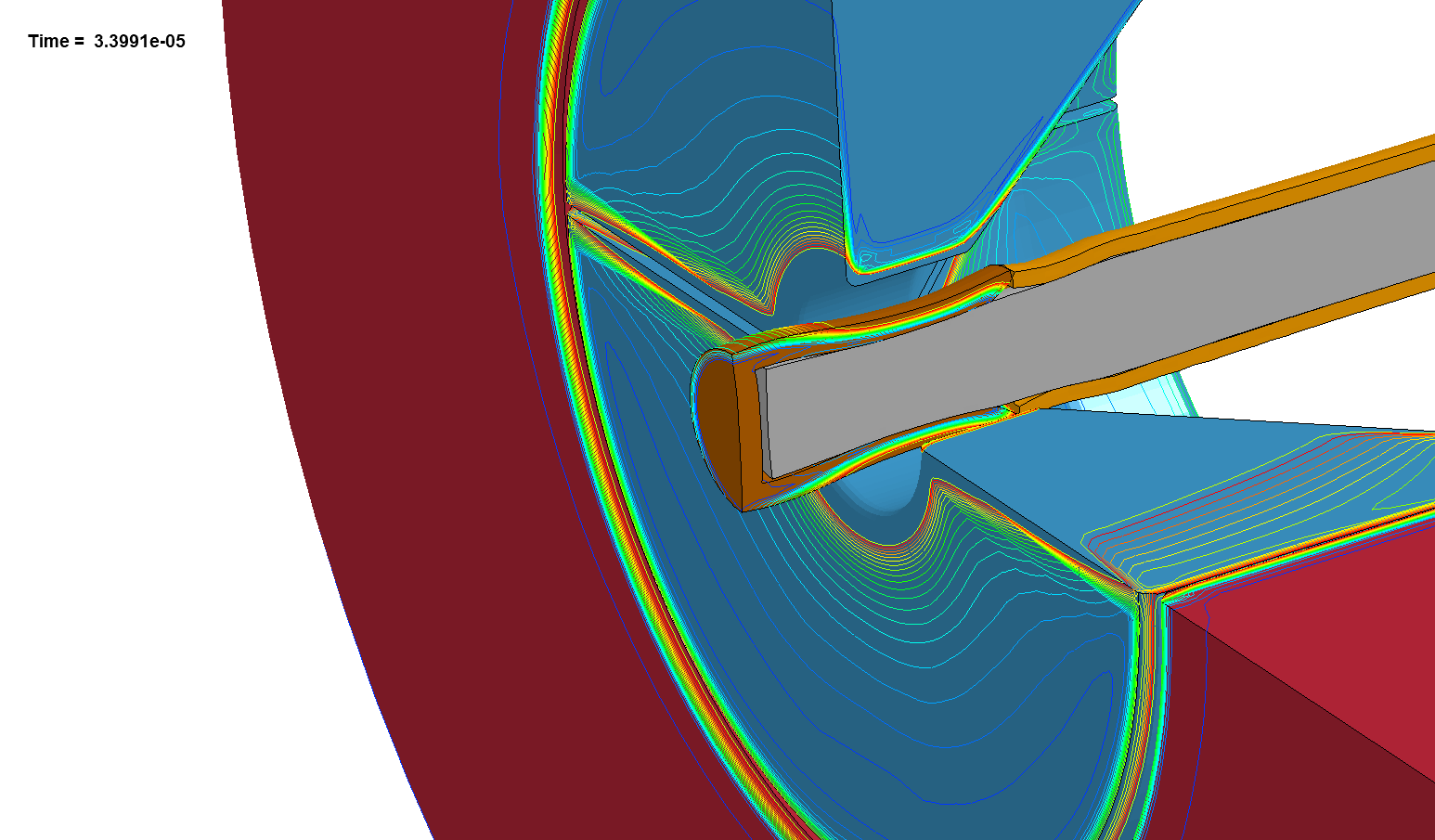
Magnetic Pulse Crimping (MPC)
This simulation shows crimping of a terminal onto a cable and visualization of current densities. Lorentz forces are generated by a coil on a mechanical part and enable crimping of circular parts.
The simulation phase also enables Bmax to:
- Define the process: direct/indirect, with/without pusher, with/without membrane, etc.
- Optimize active parts and the loads
- Validate the design (coil, field shaper, cooling, etc.) and HPP parameters
- Validate the quality of connections (for example mechanical strength)
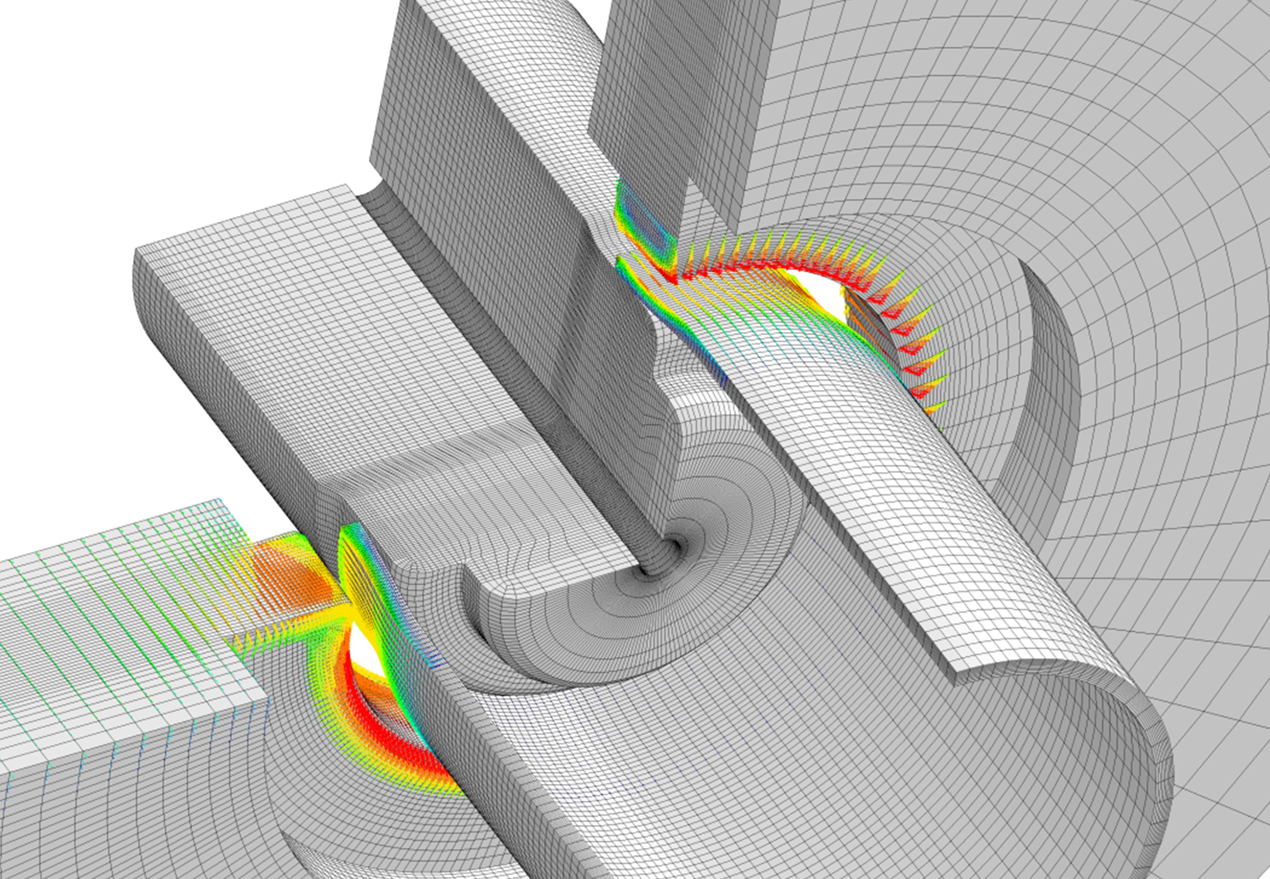
Magnetic Pulse Welding (MPW)
This simulation shows welding of a cylindrical aluminium part to a steel end-cap and visualization of the main stresses. This high-performance welding of dissimilar materials shows that there are no mechanical degradations. Lorentz forces are generated by a coil on a mechanical part and enable the welding of circular, flat or complex parts.
The simulation phase also enables Bmax to:
- Define the means to obtain the required impact conditions (with/without pusher, etc.)
- Optimize the active parts and loads
- Validate the design (coil, field shaper, cooling, etc.) and HPP parameters
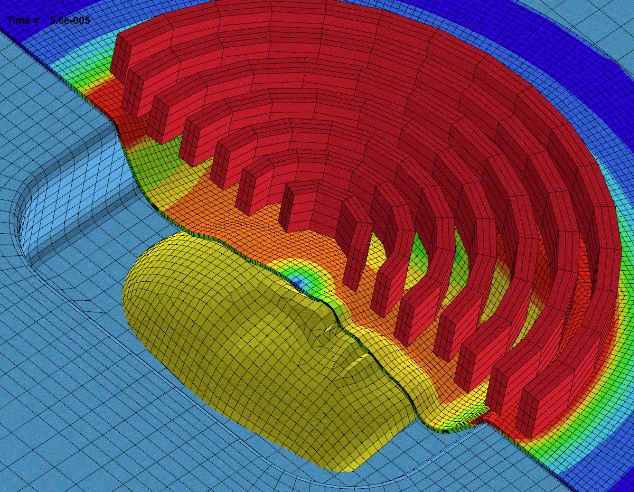
Magnetic Pulse Forming (MPF)
This simulation shows shaping of aluminium (appearance surface) and visualization of the plastic deformations. The objective is to finalize the forming parameters in order to produce the desired part. Lorentz forces are generated by a coil on a mechanical part and enable the forming of complex parts.
The simulation phase also makes it possible to:
- Define the process: direct/indirect, with/without pusher, with/without membrane, etc.
Characterize a material statically or dynamically - Design and optimize all conventional shaping operations, HPP and hybrid: magnetic shaping, stamping, hydroforming, elastoshaping, engraving, coining, extrusion, cutting, heat treatment, springback, tool closing, etc.
- Analyze specific criteria: formability, surface appearance, fracture, engraving, etc.
- Optimize the active parts and loads
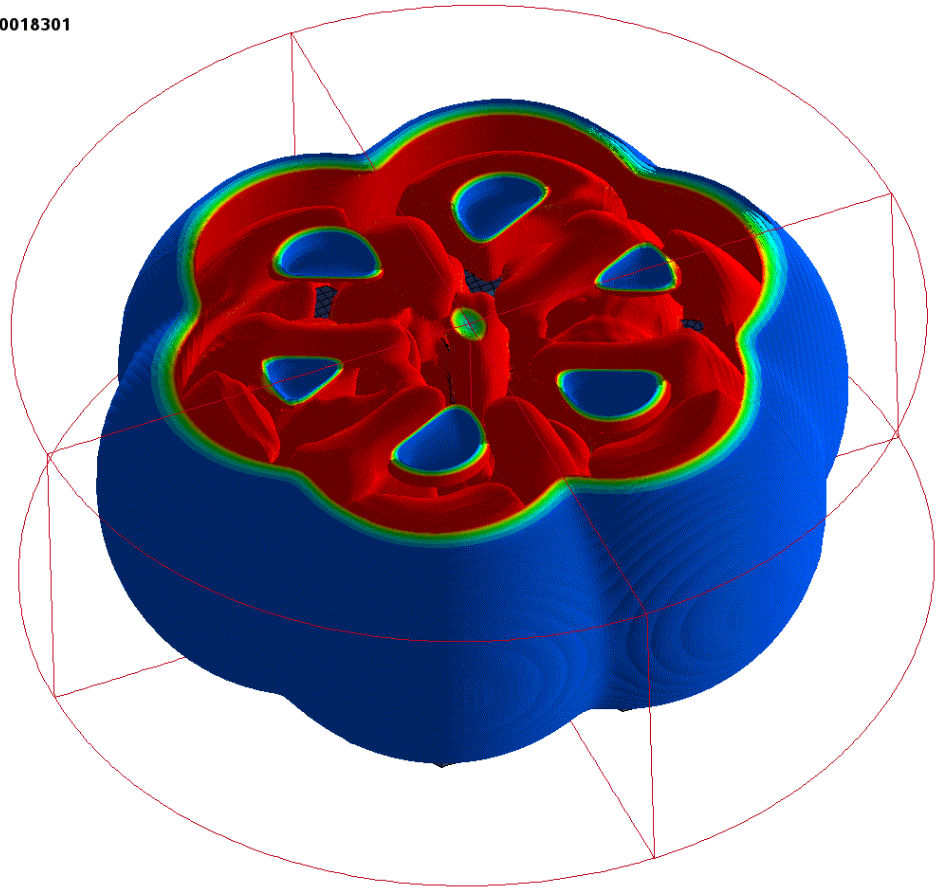
Electro-Hydraulic Forming (EHF)
This simulation shows the hybrid forming process for a nickel cobalt alloy aeronautics engine component with multi-operation shaping and visualization of the speeds generated in EHF. The objective is to finalize shaping, calibrate, produce very fine designs and/or engrave via a high power electric discharge in water for very large, complex parts.
The simulation phase also enables to:
- Define the process: EHF or hybrid (example : hydroforming/EHF), with/without membrane, simple or multi firing, simple or multi discharges.
- Characterize a material statically or dynamically and define the shapeability criteria
- Design and optimise all conventional, HPP, and hybrid shaping operations.
- Analyze specific criteria : shapeability, surface appearance, rupture, engraving, etc.
- Optimize loads and firing sequences.
A unique model of arc in water taking into account the main characteristics of the High Pulsed Power generator (voltage, inductance, capacitance and electrodes gap) has been developed. It predicts how the energy is delivered into the arc in water depending on time, allowing to predict accurately the dynamic pressure variation in the forming chamber and therefore the impact velocity of the part onto the die, and consequently the stress in the parts and the die.
Are you interested?
Contact us

